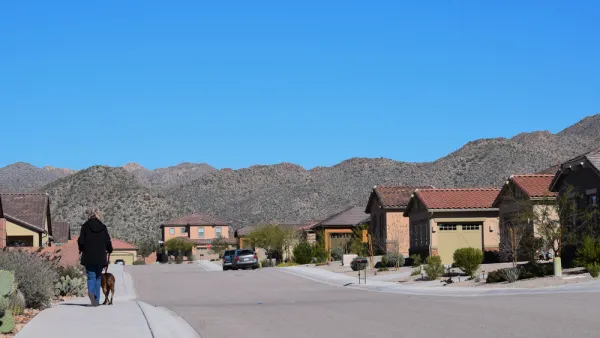Housing costs are skyrocketing all over the country. Does that sound familiar? How worried should we all be that the current boom will have similar consequences as the previous housing boom?
An article by Reuven Glick, Kevin J. Lansing, and Daniel Molitor, writing for the federal Reserve bank of San Francisco, addresses a critical question: "What's Different about the Latest Housing Boom?"
For anyone who lived through the Great Recession and the most recent housing boom, or bubble rather, it's natural to look on the current brisk housing market in many places around the country with a healthy amount of skepticism.
The team at the Federal Reserve Bank of San Francisco, however, have reason to alleviate such concerns:
"We find that the increase in U.S. house prices since 2011 differs in significant ways from the mid-2000s housing boom. The prior episode can be described as a credit-fueled bubble in which housing valuation—as measured by the house price-to-rent ratio—and household leverage—as measured by the mortgage debt-to-income ratio—rose together in a self-reinforcing feedback loop. In contrast, the more recent episode exhibits a less-pronounced increase in housing valuation together with an outright decline in household leverage—a pattern that is not suggestive of a credit-fueled bubble."
The article considers three indicators: 1) the median U.S. house price, 2) the number of private-sector workers employed in construction, and 3) the number of new housing starts, including both single- and multi-family homes. The first of those indicators is especially important, according to the article, because increases in asset prices are a fairly reliable portent.
Still, the post insists, this time is different. The remainder of the post goes into a lot of technical detail to back up that claim, relying especially on the current boom's "less-pronounced increase in the house price-to-rent ratio" and "outright decline in the ratio of household mortgage debt to personal disposable income."
FULL STORY: What’s Different about the Latest Housing Boom?

Analysis: Cybertruck Fatality Rate Far Exceeds That of Ford Pinto
The Tesla Cybertruck was recalled seven times last year.

National Parks Layoffs Will Cause Communities to Lose Billions
Thousands of essential park workers were laid off this week, just before the busy spring break season.

Retro-silient?: America’s First “Eco-burb,” The Woodlands Turns 50
A master-planned community north of Houston offers lessons on green infrastructure and resilient design, but falls short of its founder’s lofty affordability and walkability goals.

Test News Post 1
This is a summary

Analysis: Cybertruck Fatality Rate Far Exceeds That of Ford Pinto
The Tesla Cybertruck was recalled seven times last year.

Test News Headline 46
Test for the image on the front page.
Urban Design for Planners 1: Software Tools
This six-course series explores essential urban design concepts using open source software and equips planners with the tools they need to participate fully in the urban design process.
Planning for Universal Design
Learn the tools for implementing Universal Design in planning regulations.
EMC Planning Group, Inc.
Planetizen
Planetizen
Mpact (formerly Rail~Volution)
Great Falls Development Authority, Inc.
HUDs Office of Policy Development and Research
NYU Wagner Graduate School of Public Service




























